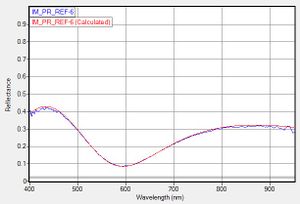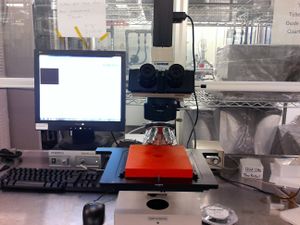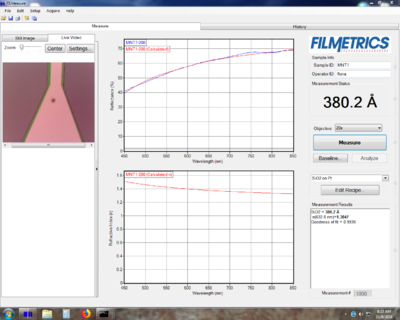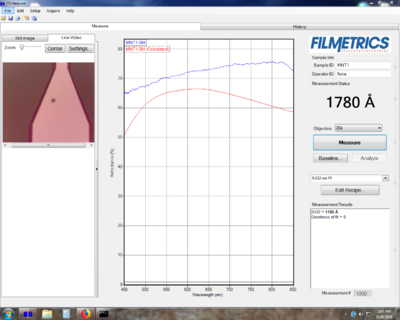Filmetrics F40-UV Microscope-Mounted
|
About
The Filmetrics F40-UV is a microscope-mounted thin-film measurement system, allowing you to non-destructively measure thin-film thicknesses in small (patterned) areas on your sample. The microscope is a standard Olympus BHJML metallurgical trinocular microscope. It is an optical reflectometer, acquiring reflection spectra between 400-900nm optical wavelengths (Vis to Near-IR) with a regular halogen microscope light source. The Filmetrics software then performs curve-fitting to determine the thickness and/or refractive index of the measured films.
Capabilities
- Measure optically transparent thin-films down to ~30nm thickness.
- Microscope Objectives: 10x, 20x, 50x, 100x, 150x
- Acquire Optical Reflection Spectra from 400-900nm
- Spectrometer/Detector is capable of detecting down to UV ~190nm, but light source does not support this wavelength.
- Reflectivity curve-fitting for thin-film thickness analysis, supporting many common materials (Si3N4, SiO2 dielectrics, Si, GaAs, InP semiconductors, metals, photoresists etc.)
Operating Procedures
Examples
Good Curve-Fitting
Do not believe your thickness measurements unless the red/blue curves show a reasonably good match!


Checking whether a dry etch is complete
The F40-UV is very useful for measuring whether a thin-film has been completely removed during a dry etch. This is similar to using laser monitoring during the etch, except that the microscope enables you to measure inside small patterned areas that a laser monitor spot may not fit inside.
In the following example, we are trying to etch away the SiO2 from on top of a Platinum contact metal. The 20x objective allows us to measure the SiO2 thickness on top of the Platinum as we continue to etch in 1 minute increments, measuring in between etches.
Finally, when the SiO2 has been fully removed, we see that we can't get a good fit between the measured (blue) and simulated (red) data.
Since the Platinum layer is thick enough to be opaque to visible light (>50nm), we just modelled this as SiO2 on top of Platinum, ignoring any other materials below the platinum.
Other Info
Equip > Characterization > Microscopes - see a list of all our microscopes


